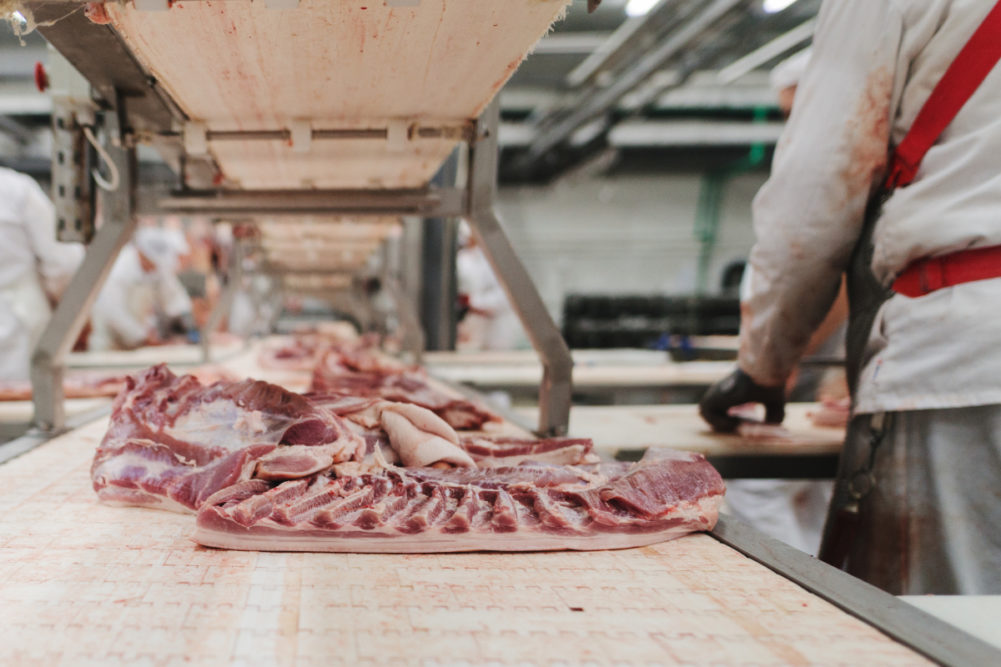WASHINGTON — The Centers for Disease Control and Prevention and the Occupational Safety and Health Administration on May 12 issued interim guidance for manufacturing workers and employers on how to operate plants and work safely during the coronavirus (COVID-19) pandemic.
The food industry has been pressing for such federal direction, and Geoff Freeman, president and chief executive officer of the Consumer Brands Association, on May 15 said the joint guidance was the type of coordinated federal action required and was “a good step in the right direction.”
At the same time, the CBA confirmed the guidance did not address some pressing questions it and 11 other food and household product organizations, including the American Bakers Association and the North American Millers’ Association, posed in a May 7 letter to Vice President Mike Pence, who heads the Coronavirus Taskforce.
The questions included: What threshold of positive COVID tests should trigger a plant shutdown? When and how should manufacturers administer tests as they begin reopening a plant? And will public health authorities accept privately administered test results?
As the food industry urged federal authorities to continue issuing clear, coordinated guidance that manufacturers may follow and state and local governments may adopt, organized labor pushed for a more robust federal response to the pandemic than guidance documents. The AFL-CIO on May 18 filed suit in the US Court of Appeals to force OSHA to issue an emergency temporary standard to require manufacturers through regulation, not guidance, to take measures protecting workers during the COVID-19 pandemic.
The CDC/OSHA guidance document said the first step was to have a plan. Each workplace should identify a coordinator who will be responsible for COVID-19 assessment and control planning. Infection control and occupational safety and health plans should apply to anyone entering or working in the plant. Management should maintain ongoing communication with state and/or local public health officials and be aware of and follow all applicable federal regulations and public health agency guidelines.
Workplace assessments to identify COVID-19 risks should be conducted periodically, and as part of these assessments, “facilities should consider the appropriate role for testing and workplace contact tracing (identifying person-to-person spread) of COVID-19 workers who tested positive in a work site risk assessment, following available CDC guidance.”
In a section on engineering controls, the agencies said work environments should be configured so workers are spaced at least six feet apart, in all directions, if possible. Ideally, workstations should be aligned so workers do not face one another.
The agencies suggested the use of physical barriers, such as strip curtains, plexiglass or similar materials, or other impermeable dividers or partitions to separate manufacturing workers from each other, if feasible.
The guidance said facilities should ensure adequate ventilation in work areas, ensure pedestal fans are placed so air does not blow from one worker directly at another, and remove personal cooling fans from the workplace.
Hand washing stations or hand sanitizers should be placed at multiple locations, additional check in/out stations should be set up to reduce crowding, and breakrooms should be configured to increase worker separation.
The guidance included several suggestions on how employers could promote social distancing including staggering breaktimes, encouraging workers to avoid carpooling to the plant, and cohorting (grouping together) workers so workers in each group work the same shifts and their contact with other groups of workers is minimized. Manufacturers also might consider adding a shift to decrease the number of persons in the workplace at any given time.
The guidance affirmed the CDC recommends wearing cloth face coverings as a protective measure and said employers who determine that cloth face coverings should be worn in the workplace, including to comply with state or local requirements, should ensure they are used and maintained properly.
The guidance also contains recommendations on educating workers on how to minimize risk and on cleaning and disinfecting workspaces and tools.
The agencies said workplaces, particularly in areas where community transmission of COVID-19 is occurring, “should consider developing and implementing a comprehensive screening and monitoring strategy aimed at preventing the introduction of COVID-19 into the work site. Consider a program of screening workers before entry into the workplace, criteria for exclusion of sick workers, including asymptomatic workers who have tested positive for COVID-19, and criteria for return to work of the exposed and recovered (those who have had signs or symptoms of COVID-19 but have gotten better).”
The guidance said such screening of workers for COVID-19 is an optional strategy that employers may use.
“If implemented for all workers, policies and procedures should be developed in consultation with state and local health officials, and occupational medicine professionals,” the guidance said.
The guidance then provided suggestions on how to implement a screening regimen.
Under existing OSHA regulations, employers must consider whether personal protective equipment is necessary to protect certain workers from workplace hazards.
The agencies added, “During the COVID-19 pandemic, manufacturing employers should consider allowing voluntary use of filtering facepiece respirators (such as an N95, if available) for their workers, even if respirators are not normally required.”




